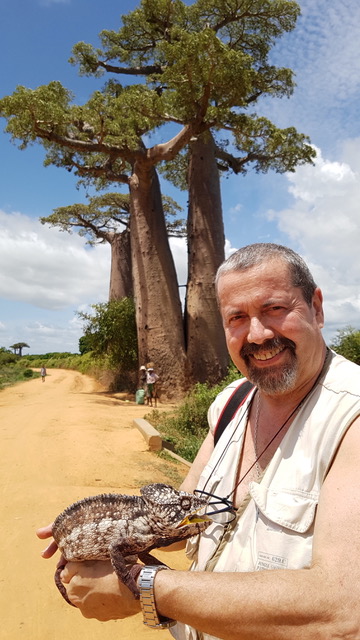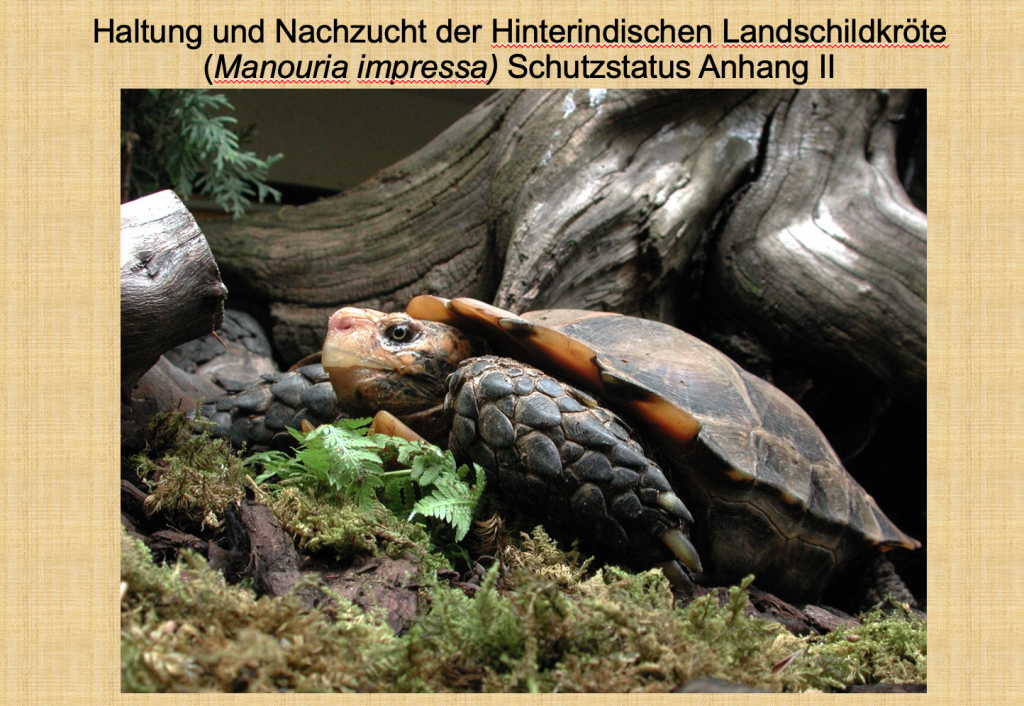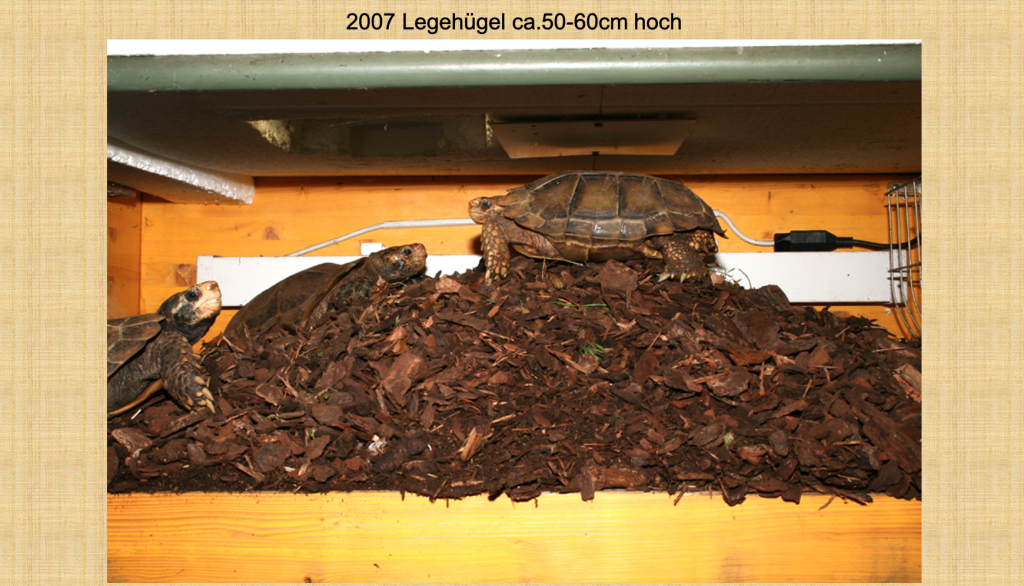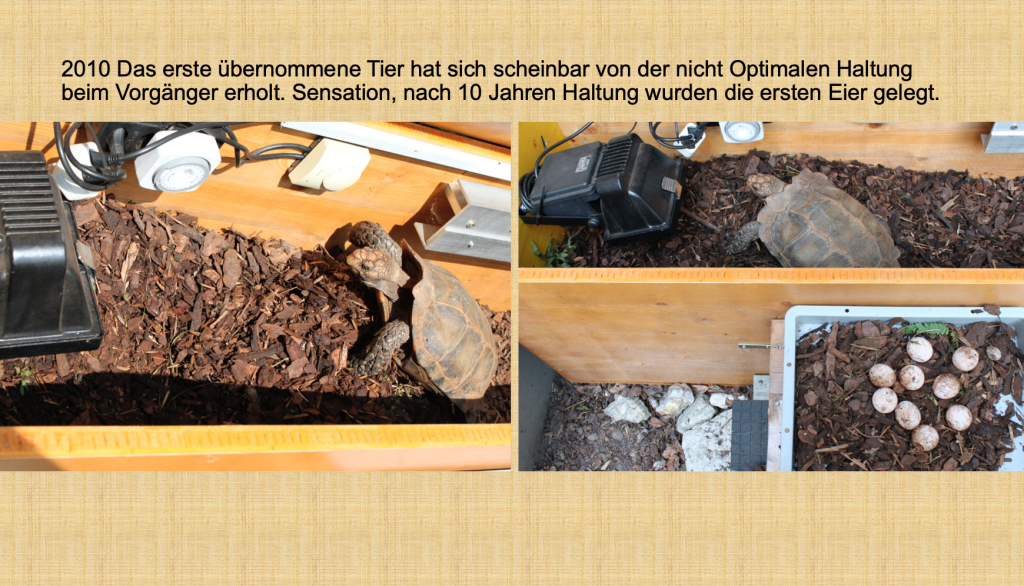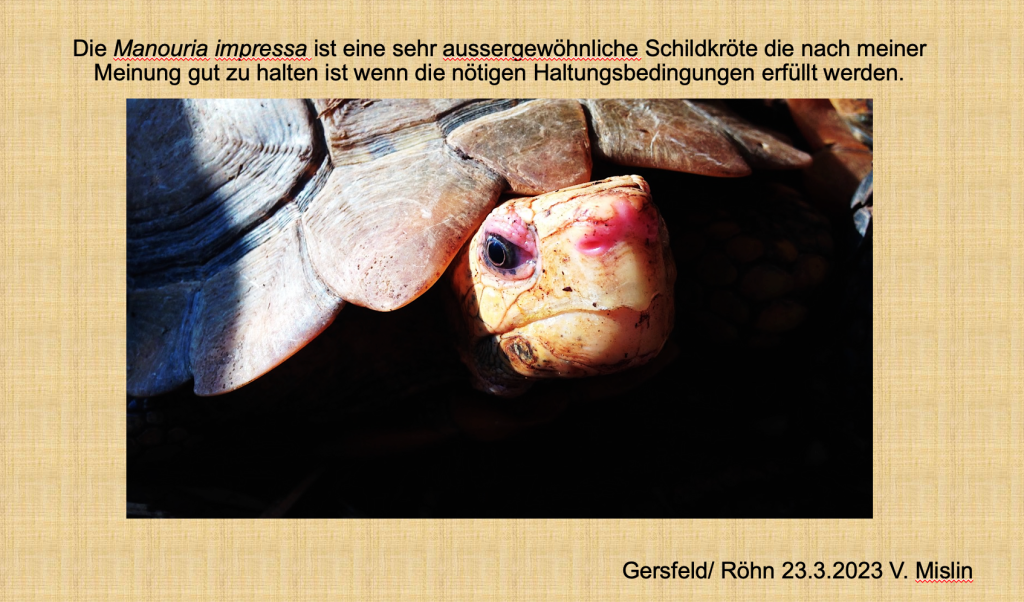Referentenvorstellung: Viktor Mislin
Viktor Mislin aus Reinach/ Schweiz: „Haltung und Zucht der Hinterindischen Landschildkröte Manouria impressa“.
Sehr geehrte Besucher der Jahrestagung der AG Schildkröten,
Ich halte seit meiner Kindheit mit etwa 8 Jahren Schildkröten. Damals waren das Griechische Landschildkröten, die man im Kaufhaus für 5.- Schweizer Franken kaufen konnte, was heute zum Glück nicht mehr möglich ist. Seither sind 66 Jahre vergangen und ich habe mich in den letzten 24 Jahren auf 3 Arten spezialisiert:
Homopus areolatus, Pyxis planicauda und Manouria impressa.
Diese drei Arten habe ich alle nachgezogen, wobei Manouria und Planicauda in einem Projekt integriert wurden.
Mehr Informationen zu diesem Projekt findet man auf folgender Homepage
https://www.ehap-emi.de/
Zurzeit werden allerdings keine neuen Projektmitglieder gesucht.
Die Faszination bei der Manouria impressa ist folgende: Sie ist ein Überbleibsel von den Dinosauriern, ähnlich wie die Krokodile baut sie Nesthügel, und bewacht das Gelege- wehe, man kommt zu nahe. Wenn man die Hintergliedmassen anschaut, wird einem klar, dass die Tiere in steilem Lebensraum bis 2000m/üM vorkommen. In den ersten 3-4 Wochen bewacht sie den Hügel und kann sehr gut fauchen, und einem, wenn sie die Finger erwischt, erhebliche Bisswunden verpassen. Mein erstes Tier hat mich, als ich im Gehege stand, ins Bein beissen wollen… zum Glück hat sie nur die Jeanshose erwischt, die sie über sicher eine halbe Stunde nicht freigegeben hat. Da das Gehege im Keller war, der Wohnbereich sich im 3. Stock befand, und ich das Tier nicht von meiner Hose trennen konnte, musste mir meine Frau zur Hilfe kommen. Mit erheblicher Mühe haben wir sie dazu gebracht, die Hose freizugeben, der Stoff war von dem Biss wie ein grosses „V“ ausgeblichen.
Für mich ist die Manouria impressa einfach speziell, bei der Fütterung und auch bei der Haltung, immer wieder gab es etwas Neues zu beobachten, und die Erfahrungen bei der Aufzucht der Jungtiere sind etwas Besonderes. Für mich ist sie eine gut zu haltende Schildkröte, wenn ihr die nötigen Hilfsmittel und der adäquate Jahresrhythmus angedeihen. Ich habe seit dem Jahr 2000 ein Journal geschrieben, das Tipps über Haltung und Aufzucht gibt.
Das alles hat neben dem Projekt viel Zeit und finanzielle Mittel erfordert, das muss bei der Haltung jedem klar sein, die adulten Tiere sind richtige Futter Spezialisten, sie fressen vorwiegend Austernpilze, Kräuterseitlinge, Zucchini, Gurke und gelegentlich Mango. Zum Verständnis, in der Schweiz kostet das Kilo Kräuterseitlinge ca. SFr.17.- und die Austernpilze ca. SFr.13.-, wobei Gemüse der billigste Anteil ist.
Pro Woche verfüttern wir ca. 1 kg Austern Pilze, 1 kg Kräuterseitlinge, 2-3 Gurken und Zucchini. Dazu kommen die Stromkosten,
und was ansonsten noch so anfällt. Man muss schon eine spezielle Beziehung haben, wenn man solche Tiere hält, bei denen der Unterhalt einiges an Kosten anfallen lässt.
Ich bedanke mich für Ihr Interesse.
Mit freundlichen Grüßen,
Viktor Mislin
Meet our speakers at the annual conference of the German Chelonia Group of the DGHT
Viktor MISLIN from Reinach/Switzerland: “Husbandry and breeding of Manouria impressa”
Dear visitors of the annual meeting of the German Chelonia Group,
I have been keeping tortoises since I was about 8 years old. Back then they were Hermann’s tortoises, which you could buy in department stores for 5 Swiss francs, which fortunately is no longer possible today.
Since then, 66 years have passed and I have specialised in 3 species over the last 24 years: Homopus areolatus, Pyxis planicauda and Manouria impressa.
I have bred all three of these species, with Manouria and Planicauda being integrated into one project. You can find more information about this project on the following homepage:
However, no new project members are currently being sought.
The fascination of the Manouria impressa is as follows: It is a remnant of the dinosaurs, similar to crocodiles it builds nest mounds and guards the clutch of eggs – woe betide you if you get too close. If you look at the hind limbs, you realise that the animals live in steep habitats up to 2000m above sea level. In the first 3-4 weeks it guards the hill and can hiss very well, and if it catches your fingers it can give you serious bite wounds. My first animal tried to bite my leg when I was standing in the enclosure… Luckily she only got my jeans, which she didn’t release for half an hour. As the enclosure was in the cellar and the living area was on the 3rd floor, and I couldn’t separate the animal from my trousers, my wife had to come to my aid. With considerable effort we got her to release the trousers, the fabric had faded like a big „V“ from the bite.
For me, the Manouria impressa is simply special, both in terms of feeding and keeping, there was always something new to observe, and the experience of rearing the young is something special. For me, it is an easily to keep tortoise, if it is given the necessary parameters and the appropriate annual rhythm. I have been writing a journal since 2000 that gives tips on keeping and breeding. In addition to the project, all of this has required a lot of time and financial resources, which must be clear to everyone when keeping them. The adult animals are real food specialists, they mainly eat oyster mushrooms, king oyster mushrooms, courgettes, cucumber and occasionally mango. To give you an idea, in Switzerland a kilo of king oyster mushrooms costs about SFr.17.- and oyster mushrooms about SFr.13.-, with vegetables being the cheapest part.
We feed about 1 kg of oyster mushrooms, 1 kg of king oyster mushrooms, 2-3 cucumbers and courgettes per week. Then there are the electricity costs, and whatever else is needed. You obviously need to have a special relationship if you keep animals like this, where the upkeep is quite expensive.
Thank you for your interest.
Yours sincerely,
Viktor Mislin
